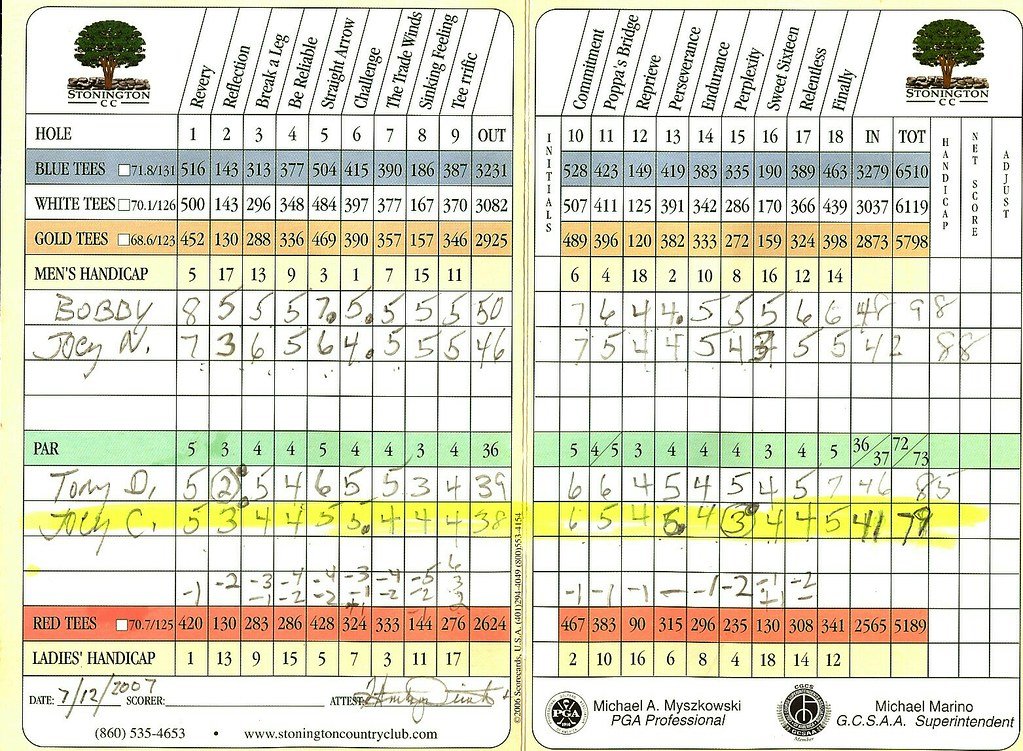If I had the choice when I started, I definitely would have taken golf lessons first. Throughout the course of time, I grew some bad habits with my game, and I have started fixing those problems lately. It’s taking some time, but the impact is becoming apparent in the course.
I know it is tough to understand the rules of golf but trust me, after reading this whole article beginner golf lessons for adults, you will find that learning the foundations of golf, how to get into golf, including setup and swing, will be much simpler. However, it’s essential to know what to do, how to do it, and what not to do before even getting onto the golf course.
And most important that you need to work on is your grip, posture, setup, your basic swing—all of which, especially grip, require some chipping and putting lessons first before you start practicing.
Well, now you want to know about beginner golf lessons for adults in depth? Let’s face it!
Introduction
This site, Inside The Golf Gear, covers everything from the history and benefits of golf to essential gear, beginner golf lessons for adults, tee box colors, golf rules—including the ten golden rules—setting up your swing, scoring basics, and expert tips to improve your game.
The ideal swing coach for novices focuses on grip and setup. Building a solid foundation early helps prevent bad habits. Coaches work with all skill levels, each with a unique teaching style. What one coach sees as a flaw, another might not.
Now you might be wondering:
What are the best ways to learn golf?
What are the best beginner golf lessons for adults?
What essential equipment do beginners need?
Private or public lessons—should I join a country club?
Should I consult a golf expert to learn proper swing techniques?
We’ve got all the answers to help you get started!
Golf originated in Scotland, and understanding its history can enhance your game. The first official Rules of Golf were published in 1744 with just 13 rules. Today, the rulebook spans over 25,000 words, adapting to nearly 50,000 unique courses worldwide.
If you’re new to the game, beginner golf lessons for adults can help you grasp the fundamentals and appreciate golf’s evolution while improving your skills on the course.
The Ten Golden Rules of Golf
After resolving the third issue, we introduce The Ten Golden Rules of Golf, inspired by a 1982 guide requested by the USGA and Golf Magazine.
Golf’s Ten Golden Rules:
- Play the ball as it lies.
- Do not move, bend, or damage fixed or growing objects.
- You may remove loose natural objects, except in water hazards or bunkers, without penalty.
- Moveable man-made objects can be removed.
- Take relief from uneven surfaces, worm casts, and abnormal water conditions outside irrigation areas.
- Do not touch the ground or water in hazards before your swing.
- If your ball lands in a water hazard and is unplayable, drop it behind the hazard or replay with a one-stroke penalty.
- If the ball is lost or out of bounds, take a penalty stroke and replay from the previous spot.
- If you have an unplayable lie, drop the ball at the last shot’s location with a penalty stroke.
- On the putting green, you may fix old hole plugs and ball marks, but not spike marks.
What to Wear on the Golf Course?/?

Understanding Golf Attire:
It is best to check the club’s website or give them a call before you come to play. If you’re ever unsure, though, you can’t go wrong with:
- A cap or hat
- A shirt with a collar
- A classy sweater
- Chinos or trousers
Clothing: Dress comfortably. Since you may adjust them according to the weather, thin layers are the best option.
Shoes: Trainers or other flat-soled shoes work well. Consider purchasing a pair of golf shoes if you decide to start playing golf. On the golf course, comfortable shoes that breathe well and repel water are essential.
Waterproofs: Whether it’s windy or chilly, wearing waterproof apparel is beneficial for playing golf in all kinds of weather. They’re a great investment because they can be used for more than just golf!
Furthermore, carry the following items in your pockets or golf bag:
Two towels: I have a bigger towel clipped to my backpack and a smaller one attached to my belt loop, so I don’t have to carry a huge one all the time. If I recall, I’ll give it a quick soak in water to help clean your golf ball and clubs in the event that ball washers aren’t available.
Extra golf balls: Carry two or three in your pocket to avoid having to return to the cart and save time if you hit a ball out of bounds, into a pond, or cannot find it in the fairway. I feel incomplete without an extra ball in my pocket at all times, even though I seldom ever lose them anymore.
Tips 1:
Get extra balls. you will lose some. If you find some while searching for your lost ones, keep them. There’s no shame in playing with found balls when you know they’re going in the water or woods anyway.
What's inside the bag?/?

You don’t need to buy a complete set of clubs to start playing golf. Beginners on the golf course typically require four essential clubs.
THE WOODS:
These are the longest clubs in the bag, designed to hit the ball as far as possible. The woods consist of:
- Driver: At the beginning of a hole, such as a par 4 or par 5, use this club, which is the longest in the bag, to hit the golf ball far away from the fairway.
- Fairway Woods: These can be rescue clubs, 5-woods, 7-woods, or 3-woods, and their purpose is to hit the ball longer from the fairway to the green.

2. IRONS:
These typically range from a 3 iron to a 9 iron. The lower the number on the iron, the longer the shaft, which allows for greater swing speed and the ability to hit the ball farther. Higher-numbered irons have more loft, enabling them to lift the ball higher in the air, although they cover shorter distances.
3. WEDGES:
If the ball hasn’t completely reached the green, use these clubs. Although they have a lot of lofts and are shorter clubs than irons, they are not as effective.

4. PUTTER:
This flat-faced club’s job is to roll the ball into the hole and down the green.
6. The Tee Box:

You’ll start the game with a selection of tees based on your ability level. Depending on the course, these will vary, but the front, middle, and back tees are usually the essentials. It can be overwhelming for a beginner to see five different colored tee boxes.
Here is a list of color variations with the explanation below.
Tee boxes on golf courses usually come in the following colors: red, yellow, white, blue, or black.
- Red Tees: Usually, the red tee is the one that is closest to the hole. This is the shortest path between the tee and the hole. Women, older players, and those who prefer to hit their initial shot from closer to the hole frequently use these tees.
- Yellow Tees: Senior golfers—those who are 65 years of age and older—usually use the yellow or gold tee box.
- White Tees: The majority of nongolfers start on the white tee. It’s commonly referred to as the “middle” or “men’s” tee. This is due to the fact that, despite their larger handicaps, the majority of the players at these boxes are still capable of hitting the ball fairly powerfully.
- Blue Tees: The blue tee is usually the second-longest and closest to the hole. These are the recommended tees for more seasoned golfers who want to improve.
- Black Tees: The longest starting position available on any golf course is the black tee. Professional golfers use black tees to provide the most difficult starting. It’s additionally used in many championship golf events.
Divot Tool: Used to repair marks on the green caused by your approach shots.
Ball marker: Mark your ball on the green if you’re in someone else’s putting line.
Gloves: It improves your grip on the club, especially when you grasp it with your upper hand.
Pencil and Scorecard: These are used to keep score during a round of golf.
Tips 2:
You don’t necessarily need to buy golf shoes, but make sure the shoes you wear have some grip. I suggest hitting 3-5 balls on the range with your driver, 3-wood, and iron before you head out to loosen up and get a sense of how you’re hitting.
Understanding the Golf Course

Golf Courses & Beginner Tips
A golf course typically has 18 holes, split into the front nine and back nine. Some have only nine holes, played twice for a full round.
Finding Beginner-Friendly Courses
While no official “beginner-friendly” courses exist, some are more welcoming. Beginner golf lessons for adults can help build confidence. Consider:
- Country Clubs: Less crowded but expensive.
- Public Courses: Affordable but often busy.
- Low-Green-Fee Courses: Great for beginners.
Enjoying Your Round
- Play on Weekdays: Less crowded.
- Twilight Rates (After 4 PM): Lower fees.
Joining a Club
- Start with beginner sessions.
- Play with other beginners.
- Take lessons from a PGA pro.
- Get a handicap for fair play.
- Stay active in club events.
Follow these steps to enhance your golfing journey!
You May also like: Beautiful Golf Courses In The US 2025 Edition
Tips 3:
How to book a tee time
In order to play on any golf course, you need to reserve a time slot known as a “tee time.” You may make a tee time reservation through their website or online at most golf courses, but you can also phone the golf store.
Setting up your swing

This is an essential aspect, especially for beginners.
Indeed! Mastering the golf swing involves key elements often overlooked by beginners. These fundamentals are crucial for a solid foundation, and I wish I’d had a mentor to guide me through them early on.
Remember these four essential factors before every swing:
G T S P
- G= GRIP
- T= TARGET With POSITION
- S= STANCE
- P= POSTURE
G= Grip:
The term “grip” refers to the method in which a golfer holds his club.
Remember: Holding the flag hand high is a good grip.
A good grip involves holding the flag hand high. For right-handed players, point to the flag with the hand closest to the target and place this hand toward the top of the grip (with the flag hand being the highest on the grip). Slide the bottom hand down the grip so that both hands touch. There are several different types of grips, such as overlap and lock grips. The most popular kind of grip is the lock grip.
T= Target & positioning:
This refers to the correct positioning to aim your ball at the target. Alignment can also be fixed with clubs from foot to head.
S= Stance:
Your stance describes how far apart your feet are or whether they are close together.
Remember: “DO THE TWO STEP IT.” This means to take two steps to find your ideal foot position before you swing.
P = Posture:
Proper posture is essential for a powerful and consistent swing. Maintain a comfortable athletic stance with your belt buckle pointing towards the ball.
Clubs can also be used to correct your alignment. Maintain a straight hand grip, keep your head still, and focus your eyes on the ball. Proceed to strike the ball.
Remember to BELT BUCKLE TO THE BALL for a powerful stance.
Tips 4:
Overall, the number one thing you need to be concerned about is swing technique and ball striking. Power is worthless without technique and accuracy.
Learn the language of Golf
Golf is just one of many sports that has its own unique vocabulary. To help you feel fully prepared for your next round on the green, we’ve compiled a list of commonly used golf terms.
The score for holes:
- PAR: Each hole on a golf course is assigned a certain number of strokes, up to which the whole should be completed. Holes usually go as par 3s, par 4s, or par 5s.
- Birdie: One stroke under the par.
- Eagle: Two strokes under the par.
- Albatross or Double Eagle: Three strokes under the par.
- Bogey: One stroke over the par.
- Hole-in-One: The ball should be hit from the heading in one stroke only.
Types of Shots
- AIR SHOT
- DRAW
- FADE
- HOOK
- SLICE
Tips 5:
Be respectful of others on the course. When someone is preparing to hit, it’s important to avoid moving around too much. Excessive movement and noise can be distracting and make it difficult for the golfer to focus and execute a good shot.
Competition formats
Golf can be played in a variety of formats, with the most common ones outlined below:
Match Play: In match play, each hole is played individually. That means the highest scorer wins the hole.
Stroke Play: In stroke play, the lowest total score after 18 holes wins. It is a cumulative score tournament where your opponent is the course, and the goal is to outperform others.
Scramble: 2, 3, or 4 golfers participate in scramble tournaments.
Alternate Shot (Foursome): Alternate format consists of teams of two golfers who take turns hitting shots on each hole, alternating who tees off.
Four-Ball, skin games, Ryder cup etc. are also played.
Tips 6:
Avoid driving the golf cart too close to the green. A general guideline for all golf courses is to maintain a distance of at least 50 yards from the green at all times.
Scoring/Results:

Understanding Golf Handicaps:
To better understand the average golfer, it’s essential to grasp the concept of handicaps before diving into the fundamentals of golf scoring. Golf is a unique sport that allows players of all skill levels to compete against one another on any course. Handicaps play a crucial role in making golf enjoyable; they facilitate competition among players of varying abilities.
For more on golf scoring, see our other article
Professional golf tournaments span four days, with the total points accumulated over these days determining the results. Amateur or social golfers usually play in one- or two-day events.
A four-day competition requires players to finish eighteen holes. These 18 holes might be compared to 18 distinct courses, each with its own layout. Every hole has its own set of eighteen starting spots.
After all the holes have been played, the player who finishes with the fewest strokes is declared the winner. The lower the score (or the more negative the score), the better the player is. Typically, in about 98% of tournaments, players with a negative score become champions.
There are three types of holes in golf:
- Short Hole – Par 3
- Medium Hole – Par 4
- Long Hole – Par 5
Every hole on a golf course has a designated “par,” which is determined by its length. Holes that are less than 250 yards are typically classified as “par 3s,” holes that range from 250 to 450 yards are classified as “par 4s,” and holes that exceed 450 yards are classified as “par 5s.” This classification may vary depending on the tee you play from (championship, men’s, or women’s).
- Par 3: Under 250 yards
- Par 4: 250-450 yards
- Par 5: Over 450 yards
Tips 7:
Participate in a golf league or tournament to enhance your skills and gain experience.Tips 8:
Continue to learn about the game, upgrade your equipment as needed, and practice regularly to improve your performance.
Conclusion
You’re all set to start your golfing journey! With the basic understanding of the game’s history and essential equipment, as well as ways to improve your swing and etiquette of navigating the course, you are all set.
By acquiring the fundamentals—from grip and stance to the rules of the game—you’ll accumulate a solid foundation that will enhance your experience on the course. Whether you’re taking beginner golf lessons for adults or practicing on your own, mastering these basics will set you up for success.
Keep in mind that practice and patience are essential to success. Explore topics, make connections with other golfers, and most of all, have enjoyment! Golf is a challenging yet enjoyable sport, and we’re here to help you at every turn.
Golf for Beginners: FAQs

What are the Dos and Don’ts for Beginner Golfers?
DO:
- Begin your journey by practicing your swings in a relaxed setting.
- Invest time in improving your putting and chipping skills.
- Acquire a proper grip.
- Proper alignment and a relaxed pre-shot routine are essential.
- Maintain Consistency and Accuracy.
Don’t:
- Avoid Playing Your First Round Too Soon
- Don’t Worry About Others at the Range
- Don’t Get Obsessed on Distance
- Don’t Have Impractical Expectations. Since golf is a difficult sport, don’t put too much pressure on yourself to learn and get proficient.
How often should beginners practice golf in order to get better?
For beginners, playing 9–18 holes every other week and hitting 50 balls twice a week with a dedicated practice plan is a great starting point that can lead to quick progress.
But in practice, consistency matters more than intensity.
As an example, it is better to hit 50 balls three times a week as opposed to 150 balls in a single session. Regular practice will help you develop your abilities and get better over time.
What Penalty Strokes Are Most Common for Beginners?
In golf, there are a number of reasons why a penalty stroke could be given, but for beginners, hitting the ball out of bounds is the most common mistake.
If you’re thinking about taking a chance on a shot that’s sometimes called a “hero” ball, keep in consideration that penalties can swiftly raise your score. To maintain a higher score and keep the ball in play, choose a safer shot.
What are the best beginner golf courses in the United States?
Here are several venues in the US that are suitable for beginners to ease into the game:
- Topgolf
- Petco Park’s The Links in San Diego, California
- Disney World Golf Courses in Orlando, FL
- The Golf Club, located in New York, NY, at Chelsea Piers
- The Pebble Beach, California, 9-Hole Course
- Lakewood, Colorado’s Lakewood Country Club
- Maui Golf Club in Maui, HI
Compared to a regular 18-hole course, all of these would be far less difficult, friendly, and enjoyable for beginners.
What’s the average distance of your clubs?
The USGA reports that all amateur male golfers average a driving distance of 217 yards. Your swing speed and contact quality have a major role in determining how far you hit each club. Most amateur golfers swing the club at speeds between 80 and 100 mph.
How long does a round of golf take?
Well, that depends. A number of things come into play, including your group size, skill level, and the type of game you’re playing (foursomes, stroke play, etc.).
A round of 18 holes usually takes three to five hours.
It’s an excellent plan for beginners to start with shorter courses. Look for executive courses or 9-hole par-3 courses, which are approximately 4,000–5,500 yards from a forward tee. These choices provide you with a lot of experience in a shorter amount of time.
Approximately 75% of US golf courses are open to the public, meaning there is no shortage of opportunities.
Yes, play! No, don’t keep score, but have fun. Don’t compare yourself to others. Play fast, and use etiquette. Most importantly, enjoy yourself. It will come as you play more. Welcome to the world of golf!
Want to know-
How to Break 100 in Golf? Read This one
Golf Club Lofts and Distance Charts- Read This one



